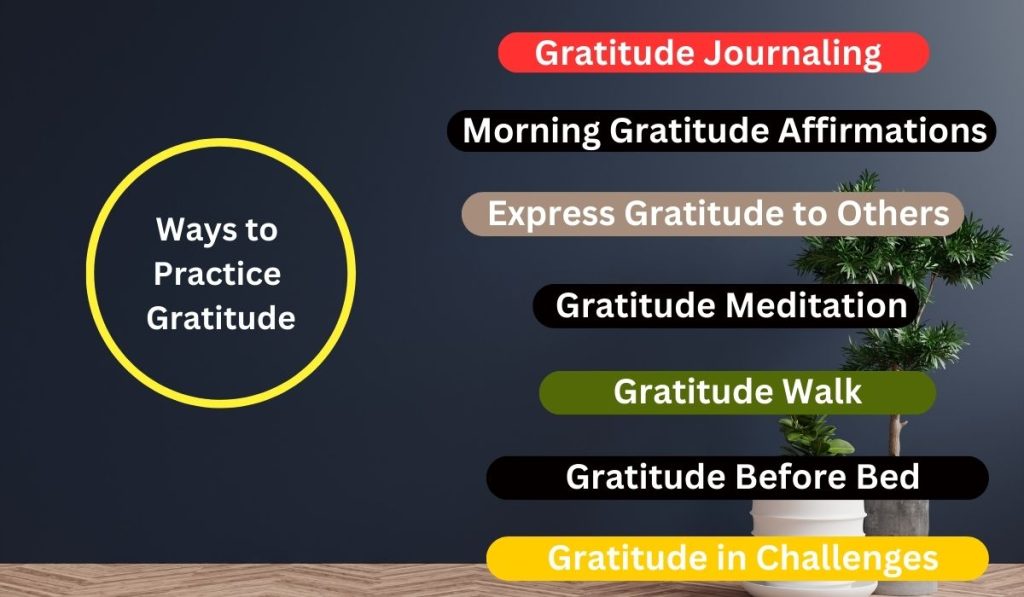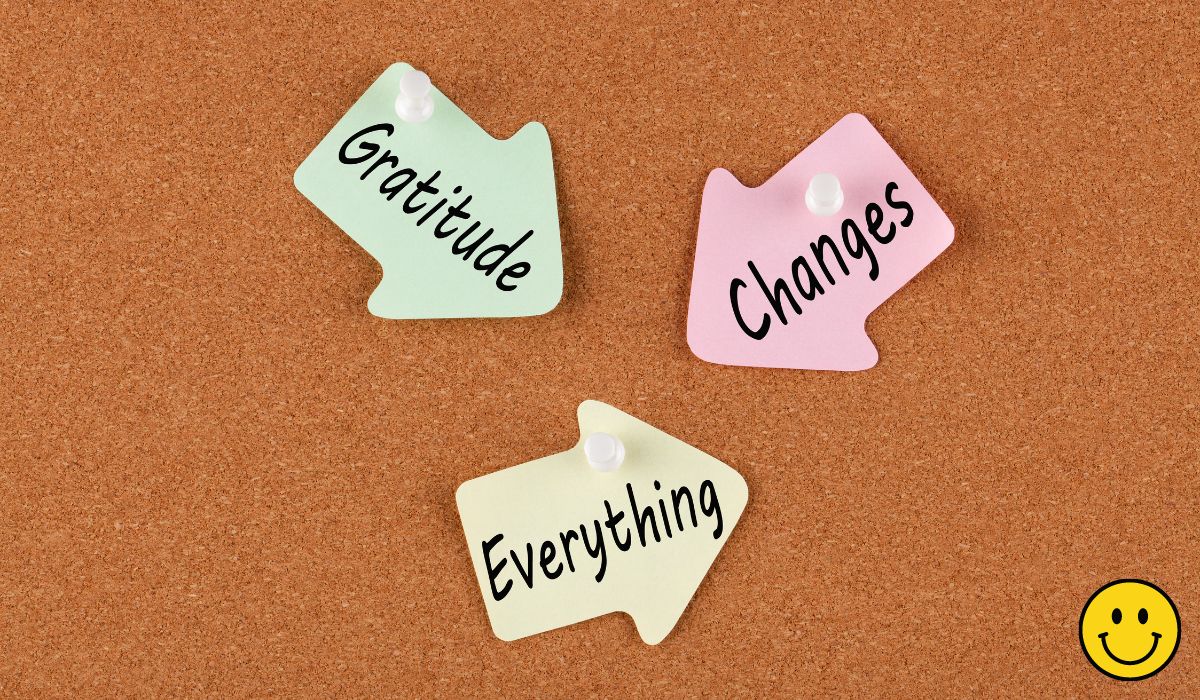Key Takeaways
- Gratitude shifts our mindset from scarcity to abundance, which is one of the key tenets in manifestation.
- Science has proven the benefits of gratitude on mental health and well-being.
- Manifestation combines intention, emotion, and belief, all of which are amplified by gratitude.
- By practicing gratitude, we can align ourselves emotionally with what we desire.
- Real-life success stories and studies showcase the powerful link between gratitude and manifestation.
Introduction
“Gratitude transforms what we have into enough.” It is a potent reminder to concentrate on what we currently have rather than what we need. Gratitude is essential in manifestation because it helps connect our feelings with our goals and attract what we want into our lives.
Putting it simply, gratitude is the act of recognizing the positive aspects of our lives. Despite its apparent simplicity, it can have a significant impact. When we practice gratitude regularly, we start to notice a change in our perspective, shifting from thoughts of “scarcity and limitation” to thoughts of “abundance and fulfillment”. When it comes to manifesting our dream lives, gratitude takes on even more significance. From years of practicing gratitude, I can tell you with 100% certainty that gratitude and manifestation are like best friends who complement one another to improve your whole life.
Understanding Gratitude
The Science of Gratitude
The benefits of gratitude are backed by science; it’s not merely a sentimental idea. Several studies have demonstrated the positive effects of practicing gratitude on mental and physical well-being. When we practice gratitude, the part of our brain that releases dopamine is activated. Dopamine is the “reward” neurotransmitter that raises emotions of well-being. It strengthens the immune system, lessens stress, and enhances sleep.
Gratitude also changes the way the brain is wired. Repetition of positive ideas and feelings influences neuroplasticity, the brain’s capacity to reshape itself, which facilitates the adoption of an abundant mindset. Gratitude training teaches our thoughts to concentrate on the positive aspects of our lives, which is necessary for manifesting our wishes. Here’s the scoop – the default ‘setting’ of humans is negative… (no thanks to news outlets and social media). A consistent gratitude practice conditions your brain to change over time, and makes it easier for you to focus on the positive side of things instead. You cannot control your first thought, but you can always control your second thought.
Types of Gratitude
Gratitude can be felt in many ways, and being aware of it can help you make the most of its power.
Situational Gratitude vs. Dispositional Gratitude: Situational gratitude refers to feeling thankful in response to a specific event. For example, getting a promotion at work might make you feel grateful. Dispositional gratitude, on the other hand, is an overall tendency to be grateful in life, no matter how big or small. People who practice dispositional gratitude often have a more positive outlook, which, in turn, helps with manifestation.
Felt vs. Expressed Gratitude: Expressing gratitude is important, whether it’s a simple “thank you” or writing a gratitude journal. However, felt gratitude is the internal experience of truly feeling thankful, which plays a significant role in manifesting desires. You would know that you’re experiencing gratitude when you can feel a warm sensation in your chest area as you think about what you are grateful for.
The Concept of Manifestation
Before diving into how gratitude fuels manifestation, let’s quickly break down manifestation itself.
Manifestation is the process of bringing into reality what you focus your thoughts and emotions on. It’s based on the principle of the Law of Attraction, which suggests that what we focus on, whether positive or negative, expands and manifests in our lives. The main components of manifestation include:
- Intention Setting: This involves defining exactly what you want to manifest. Clarity of intention is key.
- Visualization: Picturing your desired outcomes exactly the way you want it to happen. The more vivid the details, the better.
- Emotion Alignment: Feel the positive emotions of getting what you want during your visualization practice. But wait, it doesn’t stop there. Manifestation will never work if you are only feeling positive emotions during your visualization practice, and then feeling lousy for the rest of the time. This is where gratitude becomes essential.
Synergy Between Gratitude and Manifestation
How Does Gratitude Enhance Manifestation?
Gratitude is an emotional amplifier that raises your thoughts’ vibrational frequency and directs them toward the results you want. By focusing on our blessings, we change our perspective from one of scarcity to one of abundance, making room for more positive things to enter our lives. The energy of higher vibrations facilitates the manifestation of our desires.
Additionally, cultivating appreciation promotes optimism. A positive outlook makes it simpler to think that your desires are possible, which is essential for manifesting. By focusing on what we already have rather than what we do not have, gratitude helps us overcome limiting beliefs and strengthens our faith in the manifestation process.
Ways to Practice Gratitude
Here are seven powerful ways you can practice gratitude daily, which will supercharge your manifestation efforts:

- Gratitude Journaling: Write down three things you are grateful for every day. This simple habit shifts your mindset to focus on abundance.
- Morning Gratitude Affirmations: Start your day with gratitude affirmations, such as “I am grateful for all the opportunities today will bring.”
- Express Gratitude to Others: Take a moment to thank someone, either in person or through a message, which not only makes their day but boosts your gratitude levels.
- Gratitude Meditation: Incorporate gratitude into your meditation practice. Visualize things you are grateful for while meditating.
- Gratitude Walk: While on a walk, mentally list the things in your life that you appreciate. The combination of physical movement and gratitude helps to uplift your mood.
- Gratitude Before Bed: Reflect on one positive thing that happened during the day before you go to sleep.
- Gratitude in Challenges: Practice being grateful even in tough situations, as it helps to shift perspective and attract better outcomes.
Practical Steps to Cultivate Gratitude for Manifestation
Here’s a step-by-step guide to using gratitude for manifestation:
- Establish Clear Intentions: Know exactly what you want to manifest before you start.
- Make a List of the Things You Are Thankful For: List down the things you now own that support your goals. For example, if you wish to attract wealth, you can be grateful for having a laptop with an internet connection that grants you the option of making money online, or having food and shelter over your head which allows you to focus on making money, rather than worrying about your basic survival.
- Visualize with Gratitude: As you picture your goals, picture yourself feeling incredibly appreciative as though they had already come true.
- Use Gratitude Affirmations: Include phrases such as “I believe that the Universe will allow me to attract what I want as I continue to align my thoughts, actions, and vibrations to the goals I want to achieve.”
- Express Gratitude Every Day: Make it a habit to express gratitude every day, whether it be through affirmations or journaling. You can do this in the morning, or at night. I like to start my day by writing down 3 things in my journal that I’m grateful for. At night, I’ll focus on the one thing that I’m grateful for that happened during the day.
- Keep A Positive Attitude: Having gratitude in your life can help you remain upbeat, which is crucial when obstacles arise during the manifestation process.
- Stay Consistent: If you want to see positive transformations in your life, consistency is key.
Even Famous Celebrities Are Doing It?
Famous Examples: Prominent individuals like Oprah Winfrey and Jim Carrey have credited the practice of manifestation and appreciation for their success. Oprah has also frequently discussed how her daily practice of thankfulness has transformed her life. Here is a link to Oprah Winfrey giving credit to gratitude for their success.
Benefits of Gratitude
- Enhances Mental Health: Having gratitude lowers tension, anxiety, and depressive symptoms.
- Improves Relationships: Thanking others strengthens relationships and allows you to be more appreciative of the people around you.
- Enhances Self-Esteem: Consistently practicing thankfulness increases self-assurance and a cheerful attitude in life.
- Boosts Happiness: Feeling grateful makes you feel happier because it elevates your emotional vibration.
- Accelerates The Manifestation Process: Through daily gratitude practice, your brain starts to rewire itself to focus on positive thoughts. This increases your vibrations and inevitably accelerates the manifestation process.
Conclusion
Gratitude is a potent tool that helps us focus on abundance rather than lack, accelerating the manifestation process. Developing a daily practice of gratitude might help you open the door to realizing your most profound wishes. As the saying goes, “Gratitude turns dreams into reality.” Start practicing gratitude today and watch the transformation it brings into your life!
1. How to practice gratitude every morning?
Start your day with on a positive note by practicing gratitude every morning. Dedicate 2-3 minutes after you wake up to think about the three things in life for which you are thankful, such as your health, your loved ones, or the small pleasures in life. Write them down in a gratitude journal.
2. What are the 4 A’s of gratitude?
The four pillars of gratitude are Act, Affirm, Appreciate, and Acknowledge. Those who have their contributions acknowledged feel appreciated and seen. Their self-esteem is increased when they express genuine gratitude. Positive reinforcement encourages people to carry out their excellent deeds. A culture of optimism is fostered through expressing thanks through opportunities or assistance.
If you have trouble thinking of things for which you are thankful, try keeping a gratitude notebook, concentrating on the here and now, and searching for little joys in daily life. Regular thankfulness practice can change your perspective and make you more aware of the positive aspects of your life.
3. Is gratitude a mood?
Gratitude is more than just an attitude; it’s a multifaceted emotional state that includes sentiments of appreciation and thankfulness for what you already have, or what others have done. Gratitude is more of a consistent attitude or habit that may be developed over time, even though it can affect and elevate one’s mood. Practicing thankfulness is a great tool for emotional resilience and personal growth since it can result in stronger relationships, better mental health, and a more optimistic view of life.




